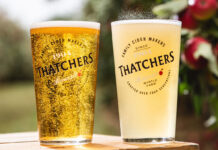
The start of the year is a great time to focus on your wine list
WITH the Christmas party season behind us, licensees have more of something that was in short supply in December – time.
And casting an eye over their outlet’s wine list could be the best way to make use of this downtime, say suppliers.
Kirsty MacKenna, sales account manager at Enotria, said January is “the perfect time to take a good look at what your wine list offers and consider whether it’s doing the job you intended it to do”.
“This doesn’t necessarily mean ripping it up and starting all over again but it does make sense to sit back and ask if your list is working as hard as it can be in all areas,” she said.
MacKenna suggested operators consider not just the wines on their list, but the number in relation to the outlet.
“Are there perhaps too many wines on your list for the size of your establishment?” she said.
“Perhaps the vast choice is bamboozling. Could you simply be offering more of your wines ‘by the glass’, therefore giving consumers more choice and the option to ‘try before they buy’?”
Amy Ledger of CWF agreed that January provides the “perfect opportunity” to start work on a new wine list, as well as offering advice on how many wines to offer by the glass.
“In terms of how many glasses a wine list should offer, well that depends on the type of outlet but a general rule for a pub would be a minimum of ten wines with six being available by the glass,” said Ledger.
“However, as many wines as possible should be offered by the glass so as to offer customer choice and encourage sensible drinking.”
Operators should focus on quality as well as quantity when building their by the glass range, according to Billy Bell of Wine Importers, who suggested that smaller serves could be used to encourage customers to purchase premium wines.
“My advice to operators is to offer customers a much better wine by the small glass as in due course the message will be that ‘less but more enjoyable’ is the key,” said Bell.
Acknowledging that venues have different requirements David Gleave, managing director at Liberty Wines, said there is “no hard and fast rule” to building a wine list, but said the style of outlet can help determine how many wines to list.
“We would generally recommend that a pub have five whites, five reds and two rosés; a cocktail bar could have a few more wines (up to 20 in total), while a restaurant could have anything between 50 and 200, depending on their customer base and their ambition,” said Gleave.
Toby Sigouin, wine buyer at Inverarity Morton, agreed that the size of a wine list “can vary massively” from one outlet to another and that there is “no one size fits all” solution.
However Sigouin did suggest that all wine lists need to “inspire consumers rather than alienate them”.
“Ideally [the wine list] should have a good balance between well known varietals and countries and then some more adventurous choices that your staff can use to really spark the interest of customers and set your business apart from the crowd,” he said.
Getting the wine list right doesn’t just impress customers, according to Miriam Spiers, sales director at Alliance, who suggested that for some outlets the right wine list can also reduce the number of times the range needs refreshing.
“With regards to choosing a wine list, if a restaurant focused on an interesting and balanced list with good value wines of various styles and price points they don’t need to change the list more than once a year,” said Spiers.
Jason Baillie, head of sales for Scotland at Bibendum, agreed that if a wine list is working “there is no real need to make wholesale changes” but did suggest that it is “always worth tweaking [the menu] with new wines”.
When it comes to the timing of those tweaks, Baillie said it may be advisable to hold off until spring time.
“We tend not to encourage list changes in January,” said Baillie.
“We like to work with our customers as wine advisers and we feel that list changes in March/April make more financial and practical sense, as we would have seen any price, vintage and tax changes – allowing for the right prices to be charged.
“In addition, as the seasons change and spring arrives, we can offer different wines.”

























